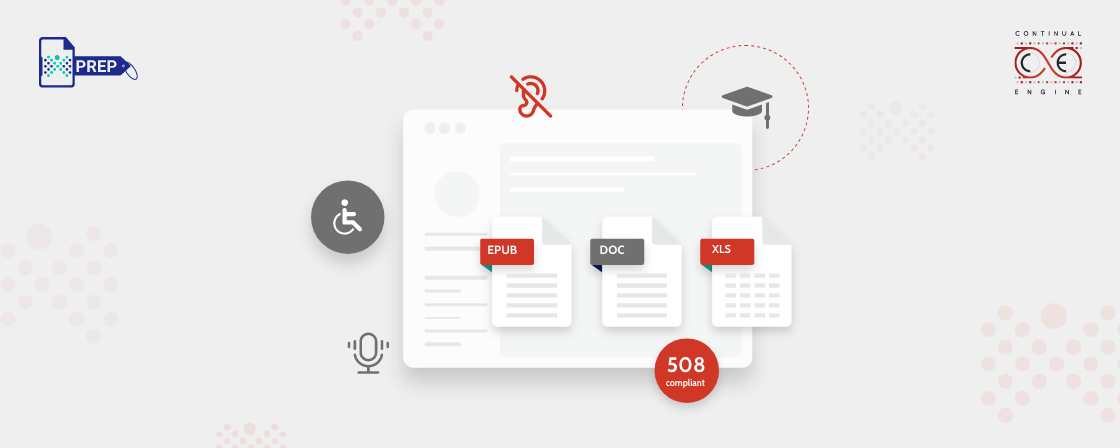Key Takeaways -
- Educational institutions in the United States are prone to legal risks when their websites are not ADA-compliant.
- ADA-compliant websites in higher educational institutions ensure everyone can easily access the necessary information.
- ADA compliance for educational institutions requires all educational websites and resources to be accessible to all, especially people with disabilities.
- Education institutes should start prioritizing web accessibility.
- The first step is conducting an audit of the website and testing the accessibility of digital resources.
Achieving ADA Compliance in Educational Institutions
Is your school or university website accessible to everyone? Can someone with a disability understand and use your content efficiently? In the United States, educational institutions are also prone to lawsuits when their websites are not ADA-compliant. All public schools, colleges, universities, and other private institutions are legally obligated to ensure digital accessibility to all students. Or they are at risk of legal investigation by the U.S. Department of Education’s Office for Civil Rights (OCR).
While it seems challenging, ADA compliance in education benefits many. It ensures that all digital content is accessible to every student, regardless of ability. Let’s examine what you need to know about ADA compliance for educational institutions and how to be proactive with web accessibility compliance.
What Does ADA Compliance Mean for Education Sites?
ADA compliance in higher education is a necessary step, considering the role of technology in education today. Not complying with ADA requirements can hinder a student’s learning and alienate employees with disabilities. By having ADA-compliant websites, educational institutions ensure that no student, teacher, staff, parent, or user is left behind, i.e., everyone can easily access the information they need, including people with disabilities.
What Does the Americans With Disabilities Act Require From Educational Websites?
Established in 1990, the Americans with Disabilities Act (ADA) law forbids discrimination against people with disabilities, giving them the same rights and opportunities as others. ADA compliance for education institutions requires all educational websites and resources to be accessible to all, especially people with visual, auditory, motor, cognitive, and other disabilities.
Along with the ADA, the Rehabilitation Act of 1973, Section 504, and the Individuals with Disabilities Education Act(IDEA) play significant roles for students with disabilities. Educational institutes must evaluate their website requirements, remove accessibility barriers, and make all operations accessible. For example, screen readers and closed captioning have become standard requirements on the accessibility checklist of most schools.
How Can Educational Institutes Attain ADA Compliance?
Though a low priority in schools until recent years, ADA compliance in educational institutions has proved essential. Here’s how your education institute can start prioritizing web accessibility:
Audit Your Website
An accessibility audit evaluates how accessible your organization’s digital services and resources are. Christian Vinten-Johansen and Michelle McManus of Penn State University identified seven components of ADA compliance in higher education at the 2017 CSUN Assistive Technology Conference. An EIT audit should identify risks. It should assess web accessibility for administration, learning management systems, course material, and institution-related websites, including those maintained by student organizations.
What to Test For?
Identify your website’s most commonly accessed sections based on the general school website requirements. This could include tuition payments, class registration, transcript requests, administrative requests, course curriculum, handbooks and other study resources. Suppose you provide these or any other content in a document format such as PDF. You will want to ensure they are accessible too.
Types of Audits and What Happens in Them?
For the best results, testing should include both manual and automated web accessibility audits. Accessibility testing by actual disabled users will also help evaluate and identify your educational website’s compliance level.
- Self Audits Online ADA-compliant courses can help get you started with three easy self-audits to test for web accessibility: keyboard navigation to test accessibility via keyboard only, appropriate color contrast, and alternative text to help the user understand non-text content.
- Professional Audits With their expert web accessibility knowledge, a professional auditor will perform a comprehensive web accessibility audit. A professional auditor, like PREP, can provide you with an accessibility statement, along with a detailed list of accessibility barriers with instructions on how to locate and fix all accessibility barriers. They also offer options to confirm the accuracy of repairs and follow-up meetings to review.
How Can PREP Help?
Following the latest requirements for ADA compliance in education institutions demonstrates your commitment to inclusivity to your entire school community and follows the law.
PREP has supported leading higher education institutes, such as universities and colleges, on their journey to complete accessibility. We care for their accessibility needs through AI-powered technology with unparalleled quality, accuracy, and scalability. Educational institutions can significantly benefit from AI-powered technology; it supports faculty and administration, web designers, and students in ensuring that anyone in your academic environment with varied needs or assistive technology can smoothly access all shared materials.
At Continual Engine, we aim to ensure your educational institution’s website provides an inclusive environment for everyone. Our personalized accessibility and remediation solutions led by trained accessibility experts ensure an effortless process of web accessibility audits, consulting, and various training options so your institute can meet the latest ADA, Section 508, and WCAG standards.
Conclusion
In an evolving, technologically adept society, all educational institutions must accommodate people with disabilities beyond physical accommodations with digital accommodations as well. ADA compliance in higher education is just as important as any other organization. If a school or university website is ADA-compliant, everyone can easily access it, including people with disabilities.
